Unlock the Secrets of Pool Plumbing: A Beginner's Guide
April 23th, 2024
April 23th, 2024
The gentle hum of a pool pump is often the soundtrack to a perfect summer day, yet for many, the labyrinth of pipes and valves lurking beneath the surface remains a mystery. Pool plumbing may seem like an esoteric craft reserved for seasoned professionals, but with a bit of curiosity and guidance, it can become a fascinating subject for any beginner.
During my first encounter with pool mechanics, I was overwhelmed by the complexity. A jungle of pipes twisted and turned, leading water through a series of filters, heaters, and chlorinators. It was not until a friend explained the basic anatomy that the fog began to lift. The heart of this system is the pump, tirelessly circulating water to keep it fresh and clean. Attached to this heart are arteries of PVC piping directing water to various organs like filters and heaters, each performing crucial functions.
Understanding pool plumbing is akin to learning a new language. Each component has a role, from the skimmer that quietly collects debris, to the return jets that gently ripple the surface. By familiarizing yourself with these elements, you not only gain confidence but also the ability to troubleshoot and enhance your pool experience. Embracing this knowledge transforms the daunting into the manageable, opening up the world of pool maintenance to anyone willing to take the plunge.
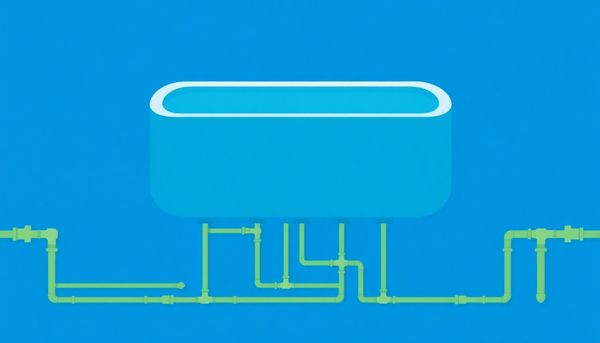
The artistry of pool maintenance begins with understanding how water flows through its intricate network of pipes and valves. It’s like being backstage of a grand performance where each element must work in harmony for the show to go on. Start by picturing the skimmer, often tucked away out of sight, quietly doing its job of collecting leaves and debris. It’s the unsung hero, providing the first line of defense against unwanted grime.
Moving along the water’s journey, the suction line steps in, a sturdy PVC pipe that ushers water from the skimmer to the pump. The pump, your pool’s heartbeat, draws in water, ensuring it moves efficiently through the system. Yet, this mighty pump requires care; running it dry can lead to damage, a lesson learned the hard way when I once forgot to refill my pool after a long summer day.
Once through the pump, the water finds its way to the filter. Here, impurities are banished, preparing the water for its grand re-entry into the pool via the return jets. Positioned strategically, these jets ensure that the water circulates thoroughly, preventing stagnation and maintaining clarity. Picture the jets as the conductors of an orchestra, guiding water in a seamless loop to the skimmer, creating a perfectly synchronized symphony of movement.
Understanding the nuances of your pool’s water flow not only boosts your maintenance prowess but also saves you from costly repairs. It’s the difference between merely owning a pool and truly mastering its care.
If you've ever marveled at how your pool stays pristine, the secret lies beneath the surface in its intricate plumbing system. Every twist and turn of the pool’s pipes plays an essential role in maintaining that inviting, clear water. Picture those hidden veins under your feet, each carrying out a vital function much like the circulatory system in our bodies.
Start with the skimmer, that trusty sentinel nestled along the pool's edge. It acts as the first line of defense, collecting leaves and other debris before they delve deeper into the system. From here, water travels through suction lines, whisked away by the power of the pump. This pump, often dubbed the heart of the pool, works tirelessly to draw water in, ensuring it remains in constant motion—never stagnant, always alive.
Once the pump has done its job, the water takes a detour through the filter. As diverse as the debris it captures, filters are the cleansing organs of the system, removing impurities and ensuring only the cleanest water makes its way back. Finally, the journey concludes as water re-enters through return jets, strategically positioned to maintain a seamless flow, sparking life into every corner of the pool.
Maintaining proper water levels is crucial; too low, and you risk damaging the pump, too high, and you disrupt the skimmer's efficiency. Understanding this anatomy not only empowers you to troubleshoot common issues but also deepens your appreciation for the hidden mechanisms that transform a simple pool into a sparkling oasis.
The skimmer and pump are like the dynamic duo of your pool’s circulatory system, each playing an essential role in keeping everything running smoothly. The skimmer acts as your pool's vigilant gatekeeper. It sits along the pool’s edge, stealthily capturing leaves, twigs, and any other debris floating on the surface. Every skimmer contains a basket that traps these unwanted bits, preventing them from clogging the intricate plumbing lines below.
Once the water has been filtered through the skimmer, it continues its journey through a suction line toward the pump. The pump, the powerhouse of the pool, creates the necessary suction to draw water from the skimmer. Imagine it working tirelessly, like a heart pumping blood through veins, to push water onward into the filter system. This constant circulation ensures that the water remains clean and inviting.
On a personal note, I once ignored my skimmer’s basket until it overflowed, leading to a clogged pump and an unexpected visit from a technician. Lesson learned—regularly emptying the skimmer basket is crucial to prevent such mishaps. Moreover, always ensure the water level is adequate; too low and the pump could run dry, risking severe damage. This duo, the skimmer and pump, is the backbone of your pool's health, ensuring each dip into the water is enjoyable and refreshing.
Maintaining the right water level in your pool is crucial, akin to balancing ingredients in a favorite recipe. A friend of mine learned this the hard way when his pool pump began to groan like an old, hungry bear. He hadn't noticed the water level had dipped below the skimmer, causing the pump to strain and overheat. Just like that, a simple oversight turned into a costly repair. By keeping a keen eye on water levels, you can avoid such mishaps.
Fluctuations in water levels are often subtle. On scorching days, evaporation can quietly lower your pool’s water, while unexpected downpours might raise it to the brim. Both situations can disrupt your pool's delicate circulation system, akin to traffic congestion during a rush hour commute. Ideally, water should sit midway up the skimmer's opening. This ensures smooth operation, keeping your pump well-fed and your filter busy removing impurities.
An automatic water leveler can be a worthy investment. It acts as a vigilant steward, ensuring the water remains at the optimal mark without your constant oversight. If you're more of a hands-on enthusiast, make it a habit to check the water level at least once a week, adjusting as necessary. By doing so, you not only protect your equipment but also guarantee a consistently enjoyable swimming experience, free from unexpected interruptions.

On a hot summer afternoon, your pool becomes the heart of the backyard, its inviting blue surface reflecting the sun. Yet, beneath that serene exterior lies a complex network that demands attention to maintain its seamless operation. Neglecting this hidden system can lead to costly repairs and a less enjoyable swimming experience.
Regularly inspect your pool's vital components, such as skimmers, pumps, and filters. Each plays a critical role in ensuring water circulates properly. A blocked skimmer basket, for instance, can restrict flow, putting undue strain on your pump. I remember when my pump started making strange noises—turns out, the skimmer was choked with leaves my kids had tossed in. A quick clean-up, and we were back to smooth operations.
Keep an eye on your water levels. Too low, and your pump runs dry, risking damage. Too high, and effective skimming is compromised. Think of it like baking a cake: too little or too much of an ingredient, and the recipe falls apart. During a particularly hot spell last year, I had to top off my pool twice, preventing evaporation from causing issues.
Don't forget about your pool's heartbeat—the pump. Regularly check for leaks or unusual sounds. A small drip today could become a flood tomorrow. And filters? They deserve a cleaning schedule. A clean filter not only keeps your water crystal clear but also reduces wear on the pump.
By giving your pool system the attention it needs, you ensure it's ready for every splash, dive, and cannonball. This proactive approach not only prolongs the life of your equipment but also enhances every swimming session.
Grasping the essentials of pool plumbing can feel like unraveling a mystery. The labyrinth of pipes and valves working tirelessly beneath the surface is the unsung hero of your pool's ecosystem. Start by envisioning your pool as a body, where the plumbing is akin to the veins and arteries. Water, like blood, courses through these pathways, propelled by a pump that acts as the heart, ensuring everything runs smoothly. Miss a beat here, and your entire system could falter.
Consider the skimmer as your pool's primary gatekeeper. It floats silently on the surface, gathering leaves, bugs, and debris before they have a chance to clog the intricate system. As water journeys from the skimmer through PVC pipes, it encounters the pump—an industrious machine that never tires of pulling water in and pushing it toward the filter. The filter, whether sand, cartridge, or diatomaceous earth, purifies the water, removing impurities and leaving it fresh for its return journey.
Once cleansed, the water passes through return lines, re-entering the pool with renewed vigor via return jets strategically positioned to maintain a continuous flow. This circulation pattern, like a gentle river, ensures every corner of your pool remains healthy and swimmable. Keep an eye on water levels, as both evaporation and overfilling can disrupt this delicate balance. Understanding these components is not just about problem-solving; it's about fostering a harmonious pool environment, ensuring endless days of care-free swimming.
Owning a pool creates endless days of fun and relaxation, but lurking beneath the surface are potential plumbing pitfalls that can turn your oasis into a source of stress. Experience has taught many pool owners that a little preventative care can go a long way. Regular inspections of your pool's plumbing are crucial. Start by checking for visible leaks around your pump and filter, as these can quickly escalate into significant water and money losses if ignored.
Keep an eye on your pool’s water level. It might seem trivial, but maintaining the right amount of water ensures your pump operates without straining. During a particularly scorching summer, one friend realized too late that low water levels had caused their pump to run dry, leading to costly repairs. It’s a lesson in vigilance that pays off in the long run.
To prevent clogs, routinely clean your skimmer baskets and ensure your pool's main drain remains unobstructed. Debris buildup can impede water flow, causing circulation issues. Additionally, consider scheduling bi-annual professional inspections to catch issues out of sight, such as underground pipe leaks. Professionals can use specialized equipment to detect and address problems before they become critical.
Remember, maintaining the hidden mechanics of your pool is as vital as balancing its chemical levels. With thoughtful attention and timely interventions, you can keep your pool plumbing running smoothly, avoiding headaches and ensuring that your pool remains a sanctuary of relaxation.
Water moves through a pool in much the same way blood circulates through the body, driven by a crucial force: the pool pump. This pump, akin to the heart, ensures that water reaches every corner of your pool, keeping it fresh and inviting. But what happens when this flow is disrupted? Optimizing water circulation can prevent common headaches, such as algae growth and uneven chemical distribution, while enhancing your pool's overall health.
Begin by adjusting your return jets. Direct them slightly downward and at an angle to create a consistent circular motion. This helps eliminate any dead spots where water fails to move, often leading to stagnation. If your pool has multiple return jets, position them to form a gentle, swirling current, ensuring every inch of the pool receives equal attention.
Don't overlook the importance of regular cleaning. Skimmers and filter baskets can become clogged with debris, restricting water flow. Schedule routine checks and cleaning sessions to keep these components clear. A personal tip: set a reminder on your phone every week to give the skimmer basket a quick clean—this simple habit can save you a lot of trouble in the long run.
Lastly, keep an eye on your water levels. Too low, and the pump might run dry; too high, and the skimmer won't work efficiently. Balance is key. By ensuring your pool's water circulation system remains in peak condition, you create a harmonious environment that's both pleasurable to swim in and easy to maintain.
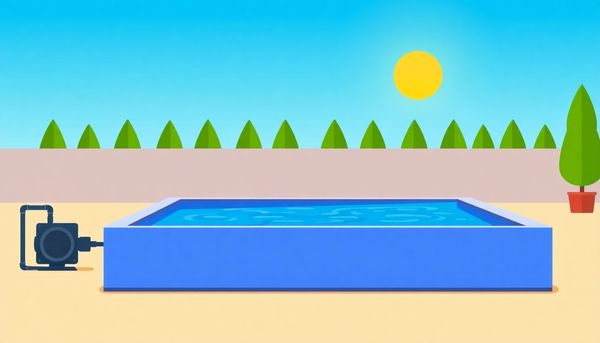
Sometimes, the serenity of a pool turns into a puzzling challenge, especially when faced with plumbing hiccups. Not long ago, my own backyard oasis turned into a riddle when the water level mysteriously dwindled. This piqued my curiosity, leading me to dabble in the world of pool troubleshooting, a skill every pool owner ought to master.
Observing your pool’s behavior is key. A sudden change in water level can signal a leak, which might be hiding along the suction lines or return pipes. Start by checking for visible water around your pump area or damp patches around your pool’s perimeter. A simple food coloring test can help pinpoint leaks; add a few drops near suspected areas and watch if the color gets pulled into any cracks.
Sometimes, pool jets may lose their vigor, hinting at possible blockages or air leaks in the system. For instance, when air whooshes through the return jets, it often points to an issue at the pump lid or the connections. Tightening these components or replacing worn-out seals usually does the trick.
Regularly inspect and clean skimmer baskets and filters. A clogged skimmer can strain your pump, causing decreased flow and eventual damage. Taking apart the filter and hosing it down might seem tedious but ensures smooth water circulation.
By becoming familiar with these quirks, you can avoid unnecessary costs and keep your pool a refreshing haven. Understanding the heartbeat of your pool, its plumbing system, lets you tackle problems head-on, ensuring your aquatic retreat remains in its best shape.
Grasping the mysteries of pool-water flow is akin to unlocking the secret to your pool's vitality. You might wonder how all the hidden pathways and unseen components come together to keep that water crystal clear and inviting. It all begins with the skimmers, those ever-vigilant sentinels at the water’s edge. They draw in debris-laden water, ensuring that leaves and bugs are snatched away before they can cause trouble deeper in the system.
From the skimmers, water is ushered into the suction lines. These robust PVC pipes carry the load, channeling water towards the pool pump. Acting as the heart of your aquatic sanctuary, the pump powers the circulation, pulling water in with relentless efficiency before pushing it onwards. A family friend once likened it to a dance, the way the pump tirelessly cycles water through the system, never missing a beat.
Once the water departs the pump, it encounters the filter, the unsung hero tasked with purifying every drop. Depending on the filter type, it sifts out impurities, ensuring what heads back into the pool is nothing short of pristine. This clean water then travels through return lines, re-entering the pool with a gentle, yet purposeful force. Strategically positioned jets ensure the water continues its journey, swirling around obstacles and encouraging even circulation.
The main drain, often overlooked, quietly completes the circuit. Situated at the deep end, it draws water down, preventing stagnation and maintaining balance. Together, these elements form the lifeblood of your pool – a harmonious flow that keeps everything in check, ensuring endless days of aquatic enjoyment for you and your family.
Maintaining the skimmer's functionality is like keeping your car's air filter in check—essential yet often overlooked. The skimmer acts as the first line of defense, sieving out floating debris before it clogs up your system. Regular maintenance ensures your pool remains a sparkling oasis rather than a murky swamp.
Start by checking the skimmer basket weekly. It’s a straightforward task; simply lift the skimmer lid, remove the basket, and empty the debris. A personal tip: keep a small net handy for those stubborn leaves that escape your grasp. This not only improves water circulation but also protects your pump from unnecessary strain.
The weir door, a small but crucial component, should swing freely. Its main job is to ensure debris captured in the basket doesn’t float back out. If you notice it sticking, a gentle clean with a brush should do the trick. Also, inspect the skimmer throat for calcium buildup or algae growth, especially during warmer months. Using a pool-friendly cleanser can help remove any stubborn residues.
Lastly, maintain the water level. The ideal is halfway up the skimmer opening. Too low, the pump may run dry; too high, debris may bypass the skimmer altogether. During my initial pool ownership days, I learned—after a minor flood—that adjusting the water level post-heavy rain is crucial. Keeping these small details in check ensures your skimmer performs optimally, supporting a hassle-free swimming season.
A pump working seamlessly is to a pool what a beating heart is to a living body. To keep this heart healthy, regular checks and maintenance are essential. One sunny afternoon, as I was lounging by my own pool, I heard an unsettling gurgle near the pump. Curiosity led me to investigate, and I discovered a blockage that could have spelled disaster if left unattended. This anecdote serves as a gentle nudge to pay attention to signs your pump might give.
Checking the water level is step one. Ensure it's neither too low nor too high. A low water level can cause the pump to run dry, leading to overheating and potential damage. On the flip side, an overfilled pool might cover the skimmer, hampering circulation and stressing the pump. Regularly glance at the waterline to keep it just right.
Next, inspect the pump basket for debris. Leaves, bugs, or twigs can accumulate, obstructing the flow and straining the pump. Making this a part of your routine will help maintain optimal operation.
Lastly, listen to your pump. Any unusual noises—whining, grinding, or hissing—can indicate issues like air leaks or worn-out parts. Trust your ears; they can often detect problems before they escalate. Keeping these practices in mind will ensure the longevity and efficiency of your pool’s heart.
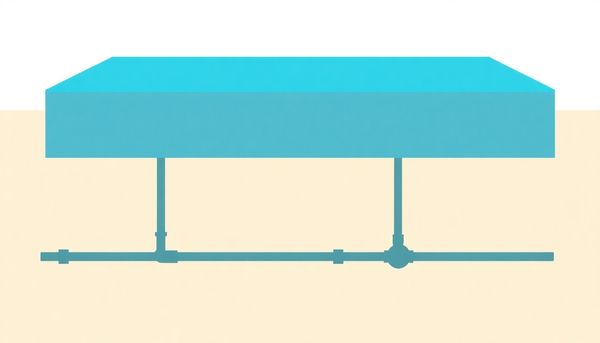
Beneath the sparkling surface of your pool lies an intricate system that keeps everything flowing smoothly. Among its vital components, the pool pump deserves special attention. Think of it as the pulse of your pool, tirelessly working to circulate water and maintain clarity. Neglect this hardworking piece, and you might find yourself facing costly repairs or replacements.
One memorable summer, I learned this the hard way. A minor oversight—failing to keep the water level adequately high—led to the pump running dry. The result? A damaged pump and an unexpected dent in my wallet. To prevent such a scenario, always ensure your pool’s water level hovers around the middle of the skimmer, neither too low nor too high. This simple check can save you from unnecessary stress and expense.
Beyond keeping an eye on water levels, consider regular maintenance as your pump's insurance policy. Clean the skimmer and pump baskets frequently to prevent clogs. Additionally, monitor the pump's pressure levels; any significant drop or spike could indicate an issue. If in doubt, consult your pump's manual for guidance or call in a professional to avoid turning a minor issue into a major problem.
By giving your pool pump the care it deserves, you not only protect your investment but also ensure countless summers of trouble-free swimming.
Hidden beneath the shimmering surface and towering above the azure depths, the true workhorse of your pool lies in its plumbing. Each pipe and valve, though often unnoticed, plays a vital role in ensuring that your backyard oasis remains inviting.
Start with the skimmer, a humble inlet on your pool’s edge, designed to catch leaves, twigs, and other intruders before they clog the system. It leads water through a suction line to the pool pump, the heart of your aquatic system. Imagine this pump tirelessly pulling water in, pushing it through the filter, and sending it back into the pool, ensuring that every dip into the water feels refreshingly clean.
The filter acts as your pool’s kidney, scrubbing the water free of impurities. It might be a sand, cartridge, or diatomaceous earth filter, each with its own method but united in purpose. Once cleansed, the water journeys back through the return jets, reintroducing itself into the pool with a gentle swirl. Properly angled jets encourage circulation, moving water in a seamless dance that prevents stagnation and supports a healthy pool environment.
A crucial player in this ballet is the main drain, often nestled discreetly at the pool’s lowest point. It works with the skimmer to draw water through the system, ensuring comprehensive circulation. By understanding these components, you’ll be well-equipped to keep your pool plumbing running smoothly, anticipating issues before they escalate and maintaining the serene escape your backyard promises.
Before you know it, a serene morning dip turns into a nightmare when the pool pump starts coughing up air instead of water. A damaged pump not only disrupts your swimming plans but can lead to costly repairs. Understanding how to protect this vital piece of equipment is crucial for pool health and your wallet.
First, always ensure your pool maintains the right water level. The water should consistently reach the middle of the skimmer's opening. If the water dips too low, the pump might run dry, which is akin to running a car engine without oil—disastrous. During summer months, evaporation can sneak up on you, so top up the pool as needed. On the other hand, after heavy rains, be vigilant that water doesn’t overflow and block the skimmer, which can stress the pump.
Regular maintenance can also ward off pump woes. Clean the skimmer basket routinely to prevent debris from clogging the system. When leaves and twigs accumulate, they can restrict water flow, causing the pump to work harder than necessary. Furthermore, inspect for air leaks in the plumbing. An air leak can cause the pump to lose prime, leading to overheating and potential damage.
Finally, consider investing in a pump timer. Setting your pump to operate during cooler parts of the day reduces strain and optimizes its lifespan. By keeping these preventive measures in mind, you can avoid pump troubles and enjoy uninterrupted swims all season long.
Water, the unsung hero of your pool's plumbing system, plays a pivotal role in maintaining its health and efficiency. Think of it as the lifeblood that ensures smooth operation. At home, I discovered the hard way that ignoring water levels can lead to an array of issues, from pump damage to ineffective filtration. A simple glance at the water line can prevent these headaches and save you both time and money.
When maintaining optimal water levels, consider the skimmer's position crucial. The water should sit halfway up the skimmer's opening. This balance allows debris to be efficiently caught without straining the pump. An overly low level risks running the pump dry, akin to a car engine without oil, leading to potential burnout. Conversely, if water flows above the skimmer, it can't effectively trap debris, impacting circulation.
Seasonal changes further complicate matters. During hot summer months, evaporation decreases water levels, necessitating frequent top-offs. On the flip side, during a rainy season, excess water might require draining to prevent overflowing the skimmers.
Keeping a mindful eye on these fluctuations ensures the heart of your pool—the pump—pulses steadily and effectively. Thus, while the shimmering surface might beckon for a leisurely swim, don't forget the unseen efforts beneath, keeping everything pristine and inviting.
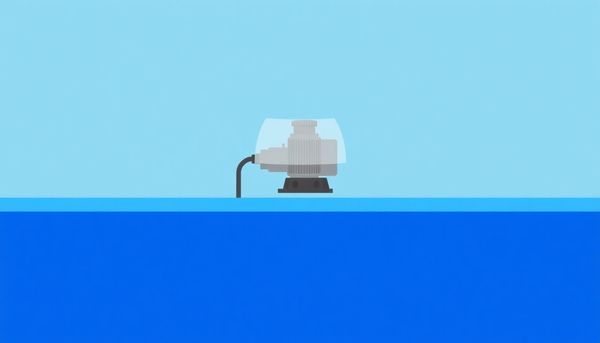
Ensuring the right water level in your pool is like maintaining the oil in your car; it’s absolutely essential for smooth operation. I remember the first time I noticed my pool pump making an unsettling noise. It turned out the water level was too low, causing the pump to struggle and pull in air instead of water. This simple oversight could have led to a costly repair.
Why is water level so critical? Too low, and your pump risks running dry, overheating, and potentially damaging its components. On the flip side, if water levels rise too high, it can interfere with skimmer action, reducing the system's efficiency. The sweet spot is maintaining the water level halfway up the skimmer opening. This ensures that the pump can do its job efficiently, circulating water through the system without a hitch.
Seasonal changes can also play sneaky tricks on water levels. A hot summer day might see water levels drop due to evaporation, while a rainy day can cause it to rise unexpectedly. It’s crucial to keep an eye on this delicate balance. Investing in an automatic water leveler can be a lifesaver, adjusting the water level for you and taking one more task off your plate.
Remember, balanced water levels not only protect the heart of your pool's plumbing system but also ensure every swim is a splash of perfection.
Think of pool plumbing as the hidden lifeline that keeps your backyard oasis shimmering and refreshing. Beneath the surface, intricate networks of pipes and valves work tirelessly to circulate, filter, and cleanse the water, ensuring every swim is as pristine as the last. Just like understanding how blood flows through the body can help manage health, grasping the fundamentals of your pool's plumbing can prevent costly mishaps.
Every skimmer is the first sentinel, capturing debris before it clogs your system. Its basket and weir are your pool’s frontline defense, ensuring only water slips through to the suction lines and into the pump. This pump, often likened to the heart of your pool, creates the necessary suction to move water, drawing it through the system with the precision of a well-tuned machine.
Once past the pump, water enters the filter — your pool’s liver, if you will. It purifies by trapping impurities, allowing only the cleanest water to flow back into the pool via return lines. These jets, carefully positioned, ensure thorough circulation, avoiding the dreaded still spots where algae might thrive.
A well-maintained plumbing system keeps everything running smoothly, from the main drain at the deep end to those strategic return jets. Keeping an eye on water levels, ensuring no dry runs for the pump, and routinely clearing skimmer baskets can save you from unwanted headaches. In essence, mastering your pool plumbing's anatomy transforms pool care from a chore into an insightful routine, ensuring every dip is pure bliss.

Understanding the dance of water through your pool's network is akin to mastering a complex choreography. It begins with the skimmer, a silent sentinel that guards against debris, funneling water into the pump. This vital apparatus, much like the heart in a living organism, propels the water onwards with powerful suction, ensuring a continuous flow through the system. Notably, keeping the water level optimal prevents the pump from running dry, a common and easily avoidable pitfall.
Once through the pump, the water embarks on a cleansing journey through the filter. Whether through sand, cartridges, or diatomaceous earth, the filter captures impurities, preparing the water for its triumphant return. As it reenters the pool via strategically placed return jets, consider adjusting them to promote a gentle, circular motion. This not only aids in thorough circulation but also ensures even distribution of chemicals, maintaining a healthy aquatic environment.
In this underwater ballet, the main drain plays a supporting role, situated at the bottom of the deep end. It works in tandem with the skimmer to draw water from all corners, preventing stagnation. Yet, never underestimate the power of water itself. Monitor levels vigilantly, especially during seasonal changes, to maintain harmony in the system. Remember, the true beauty of a pool lies not just in its clear waters but in the silent, seamless operation of its hidden workings.
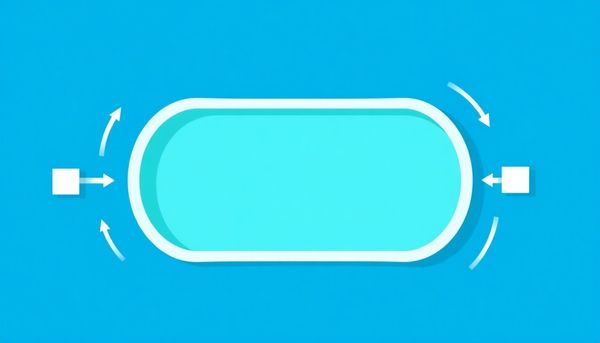
This article provided insights into maintaining your pool. Start your pool care journey today!
Want to become a pool maintenance expert? Our free Pool School course covers everything you need to know about pool care. From basic maintenance to advanced troubleshooting, you'll learn how to:
Join over 10,000 pool owners who have already transformed their pool care routine. Get started with our free Pool School course today!